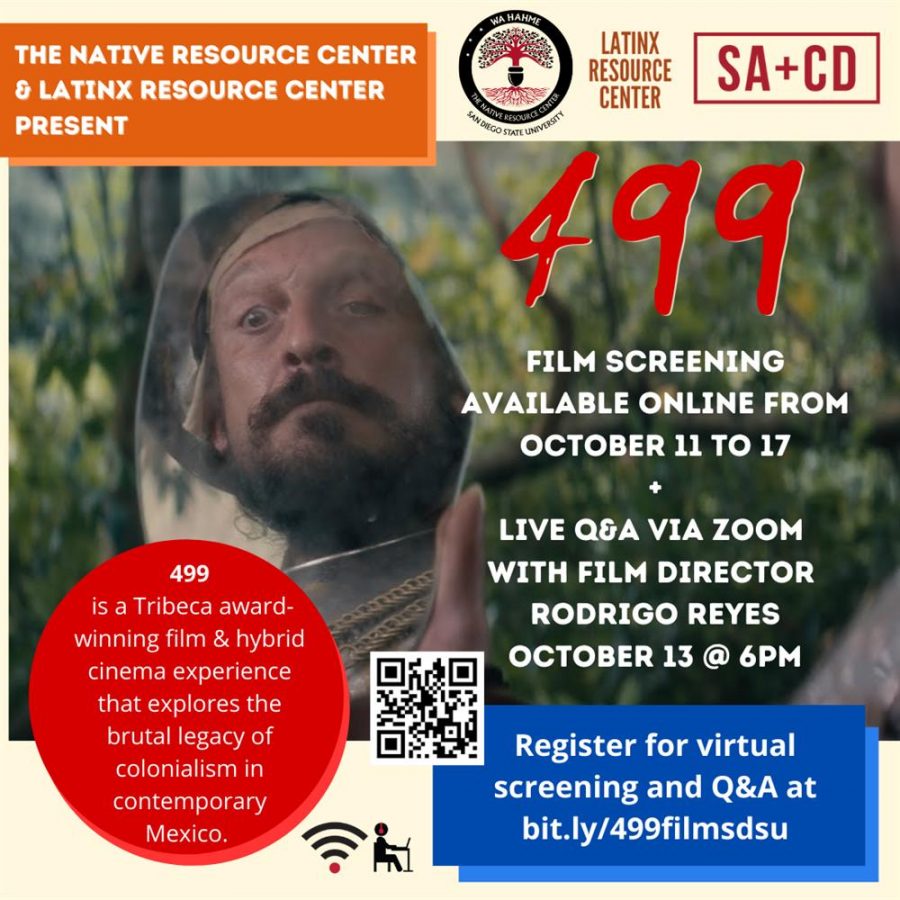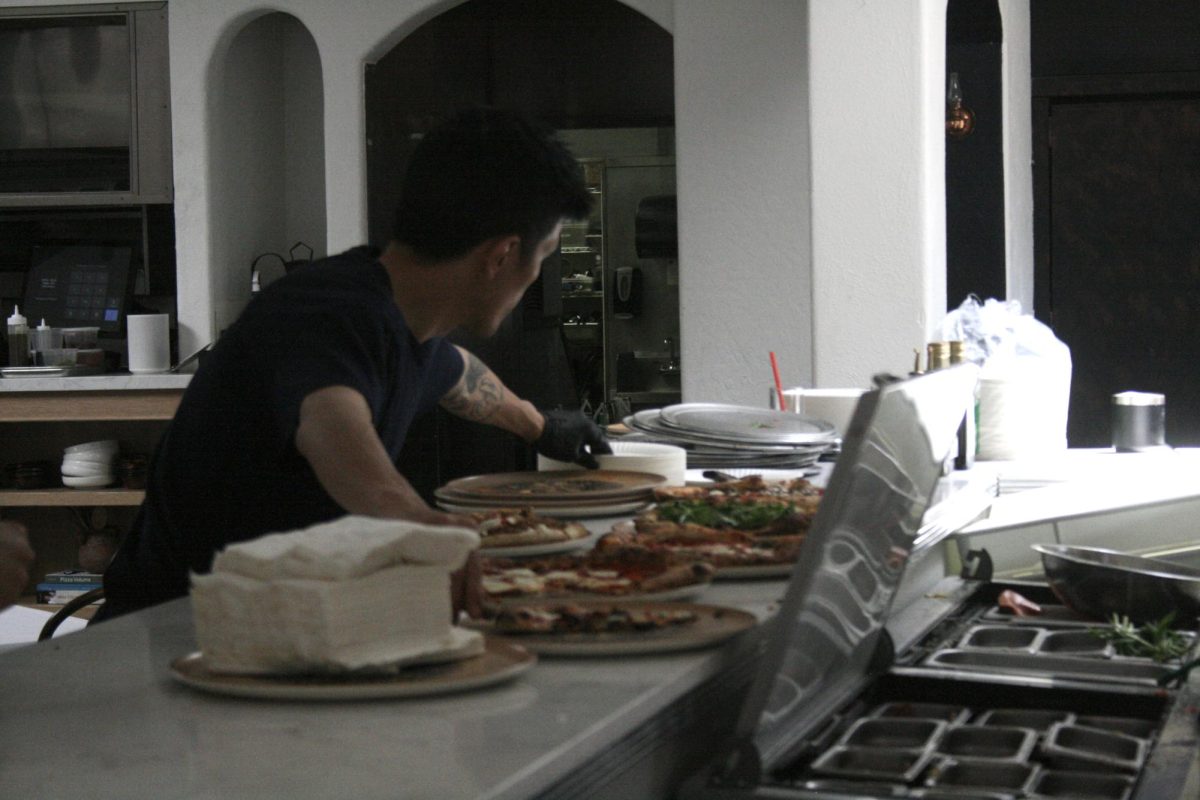The Native Resource Center (NRC) and the Latinx Resource Center (LRC) hosted a showing of the movie, “499” from Oct. 11 to Oct.17.
They also hosted a live Q & A session with the director, Rodrigo Reyes, on Oct. 13.
Both the NRC and the LRC promoted the event on their respective Instagrams, @sdsunativerc and @SDSULRC.
The documentary is about 90 minutes long. According to a description posted on Vimeo, the movie reflects on the impact of colonialism in Mexico.
“499” is the winner of the Special Jury Prize in the international feature documentary competition at the 2020 Hot Docs International Documentary Festival, according to Cinema Tropical. According to the same entry, “499” was also the winner of the Best Cinematography Award in the documentary competition at the Tribeca Film Festival.
It debuted in theatres in August, in anticipation of the 500th anniversary of the Spanish conquest.
The movie plays around with time. The first scene shows the protagonist of the movie, a conquistador, as he washes up on the shores of Mexico. He is then placed next to a woman breaking a coconut open with a sign for oysters in their juices in the background.
He aggressively takes the coconut and drinks it, reminiscent of the forceful actions of the conquistadors who took from the people as soon as they arrived in Mexico.
The documentary reconstructs Hérnan Cortés’ journey “From the coasts of Veracruz to the Aztec Capital of Tenochtitlan, the site of contemporary Mexico City,” the online description states.
As the film progresses, it continues moving throughout Mexico. The protagonist is confronted by many different people sharing true, tragic stories with him. The movie touches on topics concerning violence, assault, drug crime, and a corrupt government—all as a result of the colonization placed upon the Indigenous tribes that once formed Mexico. We also see the heavy influence of Catholicism upon the peoples, almost as a reminder, the ghost of Spanish past.
The Q & A session with Rodrigo Reyes began with a Kumeyaay land acknowledgment by Dr. Gabriela Kovats, faculty scholar of the NRC.
The event was facilitated by NRC student representative, Santino Arellano and LRC student representative Mariano Lozano Soto.
Arellano mentioned that Reyes was born in Mexico City and raised both in Mexico and in Merced, CA.
Reyes is a UC San Diego alumni and said he was always surprised by how much San Diego refuses to acknowledge the fact that it is a border town.
“I love what you do in San Diego State and I love just how much ownership you and the community take in the fact that you are in this very complex community where [there are]a lot of intersectionalities that are not acknowledged in the greater city of San Diego, as we know very well.”
Reyes was asked to talk about why the title character of “499,” the Conquistador, referred to everyone as “Indio” (Indian) as opposed to Hispanx, Latinx, etc.
“His mind is still stuck in the step of western colonialism so he doesn’t appreciate, value or even engage with Mestizaje,” Reyes said.
Reyes went into detail about what Mestizaje means.Mestizaje refers to the mixing of different races.For hundreds of years, the communities that existed in Mexico were very separated in certain regions.
Reyes explained how each Indigenous group had their own identity.When the Spanish conquistadors invaded, they enslaved some indigenous communities but still allowed them to keep their own courts and even languages.The different races didn’t actually integrate for a long time.
“The Nahuas, for instance, had their own rules, their own courts and they couldn’t participate in the economy of the colony,” Reyes said.
Reyes mentioned that even in the 19th century, Spanish wasn’t the main language because the separation had remained.
“This idea of mestizaje is a construction,” Reyes said. “I think what’s so disturbing about the Conquistador is that he’s saying ‘wait a minute, I’m part of this construction too, I’m still here.’”
Reyes said he has found that people don’t agree with this notion that the presence of the conquistadors still linger in Mexico.
“Look at the violence that is systematically in place in the country; This guy’s still here, you know?” Reyes said.
Reyes said behind all the illusions of equality, which he calls fluff, the rigid reality of colonialism still exists.
The movie shows the legacy of those originally affected by Spanish conquest also lives on.







